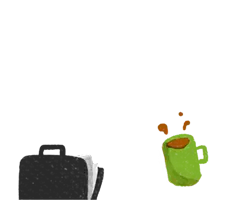Part 2Health and safety duties
Duties of PCBUs
39Duty of PCBU who designs plant, substances, or structures
This section applies to a PCBU (a designer) who conducts a business or undertaking that designs—
- plant that is to be used, or could reasonably be expected to be used, as or at a workplace; or
- a substance that is to be used, or could reasonably be expected to be used, at a workplace; or
- a structure that is to be used, or could reasonably be expected to be used, as or at a workplace.
The designer must, so far as is reasonably practicable, ensure that the plant, substance, or structure is designed to be without risks to the health and safety of persons—
- who, at a workplace, use the plant, substance, or structure for a purpose for which it was designed; or
- who handle the substance at a workplace; or
- who store the plant or substance at a workplace; or
- who construct the structure at a workplace; or
- who carry out any reasonably foreseeable activity (such as inspection, cleaning, maintenance, or repair) at a workplace in relation to—
- the manufacture, assembly, or use of the plant for a purpose for which it was designed, or the proper storage, decommissioning, dismantling, or disposal of the plant; or
- the manufacture or use of the substance for a purpose for which it was designed, or the proper handling, storage, or disposal of the substance; or
- the manufacture, assembly, or use of the structure for a purpose for which it was designed, or the proper demolition or disposal of the structure; or
- the manufacture, assembly, or use of the plant for a purpose for which it was designed, or the proper storage, decommissioning, dismantling, or disposal of the plant; or
- who are at or in the vicinity of a workplace and who are exposed to the plant, substance, or structure at the workplace or whose health or safety may be affected by a use or an activity referred to in any of paragraphs (a) to (e).
The designer must carry out, or arrange the carrying out of, any calculations, analysis, testing, or examination that may be necessary for the performance of the duty imposed by subsection (2).
The designer must give to each person who is provided with the design for the purpose of giving effect to it adequate information concerning—
- each purpose for which the plant, substance, or structure was designed; and
- the results of any calculations, analysis, testing, or examination referred to in subsection (3), including, in relation to a substance, any hazardous properties of the substance identified by testing; and
- any conditions necessary to ensure that the plant, substance, or structure is without risks to health and safety when used for a purpose for which it was designed or when carrying out any activity referred to in subsection (2)(a) to (e).
The designer must, on request, make reasonable efforts to give current relevant information on the matters referred to in subsection (4) to a person who carries out, or is to carry out, any of the activities referred to in subsection (2)(a) to (e).


